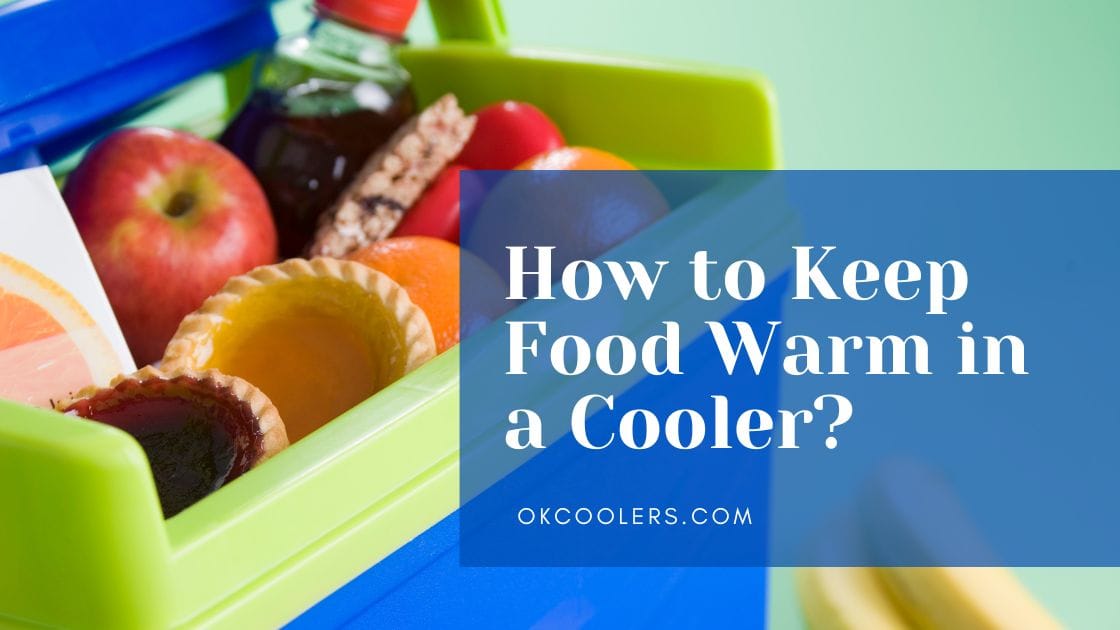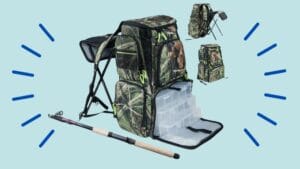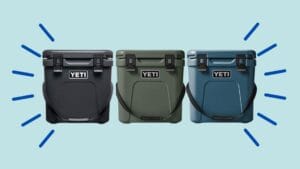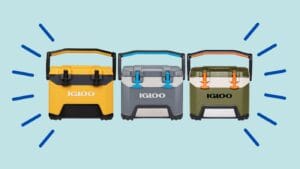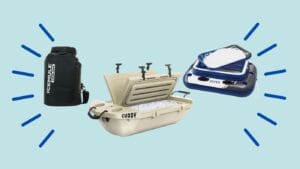Ever headed out for a picnic, only to discover that your warm, delicious food has turned cold and unappetizing? Well, you’re not alone. Many of us have been in this situation, wondering how to keep food warm in a cooler while on the move. Good news! With the right techniques, your food can stay warm and ready to eat, even in a cooler.
Yes, you heard it right. A cooler can do more than just chill your beverages! It’s a handy tool for keeping food warm as well. All you need is the know-how to use it effectively. So, let’s dive into the world of warm picnics and explore some tried and tested techniques for how to keep food warm in a cooler. Buckle up for a journey that will make your outdoor eating experiences much more enjoyable!
How to Keep Food Warm in a Cooler Quick Guide
Next time you ask, how to keep food warm in a cooler? Here we present to you four different and effective ways to do so! For more on each method continue below.
- Prepare your cooler by pre-heating it with warm water
- Cover the interior of the cooler with aluminum foil for optimal insulation
- Use Aluminum Foil to Wrap Your Food
- Incorporate towels, cardboard, or newspaper to the bottom of the cooler
- Utilize a hot water bottle or heat pack
How to Keep Food Warm in a Cooler: Techniques
After learning effective tips for how to keep food warm in a cooler, let’s delve into each technique to understand its benefits and how best to use it.
Prepare your cooler by pre-heating it with warm water
To ensure optimal insulation, it is advisable to pre-heat the walls of your cooler. Simply fill the cooler with warm tap water and allow it to sit for 20-30 minutes, allowing the walls to warm up. Afterward, discard the water, dry the cooler, and place your food inside. By doing this, you can extend the duration for which your cooler will keep your food and drinks hot, as the walls of the cooler won’t draw any heat away from your items.
It is important to note that using boiling water in your cooler can cause the walls to warp and potentially melt the insulation. It is best to keep the water temperature below 120ºF (49ºC) for high-quality coolers.
Cover the interior of the cooler with aluminum foil for optimal insulation
Coolers are effective in preventing two types of heat transfer: convection and conduction. However, there is a third type of heat transfer, known as heat radiation, which coolers rarely address. Interestingly, aluminum foil is highly proficient in reflecting and insulating against heat radiation.
Its effectiveness is demonstrated by the use of aluminum-based emergency space blankets that reflect body heat and keep individuals warm.
With aluminum reflecting approximately 97% of heat radiation, wrapping the inside of a cooler with a thick layer of aluminum foil, or multiple layers of thin foil, can significantly enhance heat retention.
Use Aluminum Foil to Wrap Your Food
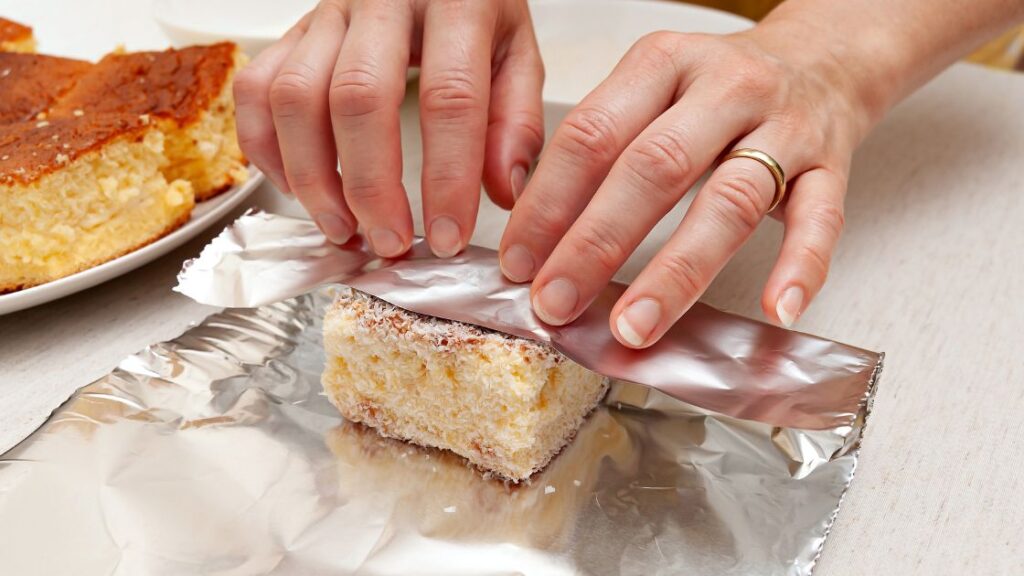
While lining the inside of your cooler with aluminum foil can enhance its insulation, wrapping your food directly in aluminum foil will keep the insulation closer to the food, resulting in better heat retention.
Additionally, aluminum foil acts as a barrier to prevent evaporation, further prolonging the warmth of your food inside the cooler. Remember to wrap loose food items and food containers with aluminum foil for optimal temperature preservation.
Incorporate towels, cardboard, or newspaper to the bottom of the cooler

Place a bath towel or beach towel at the bottom of your cooler. This serves a dual purpose: it insulates your food by creating a barrier between the walls of the cooler, which can drain heat, and it safeguards your plastic cooler from the extreme temperatures of your food.
Direct contact between your cooler and scorching hot food can lead to plastic warping and the melting of insulation in high-end coolers. To prevent this, towels are an excellent solution.
If towels aren’t available, you can also use cardboard or scrunched-up newspaper as effective insulators. They can be used in place of or in conjunction with towels as needed.
Additionally, use towels, cardboard, or newspaper to fill any empty air pockets in your cooler. This helps maintain optimal temperature regulation.
Utilize a hot water bottle or heat pack
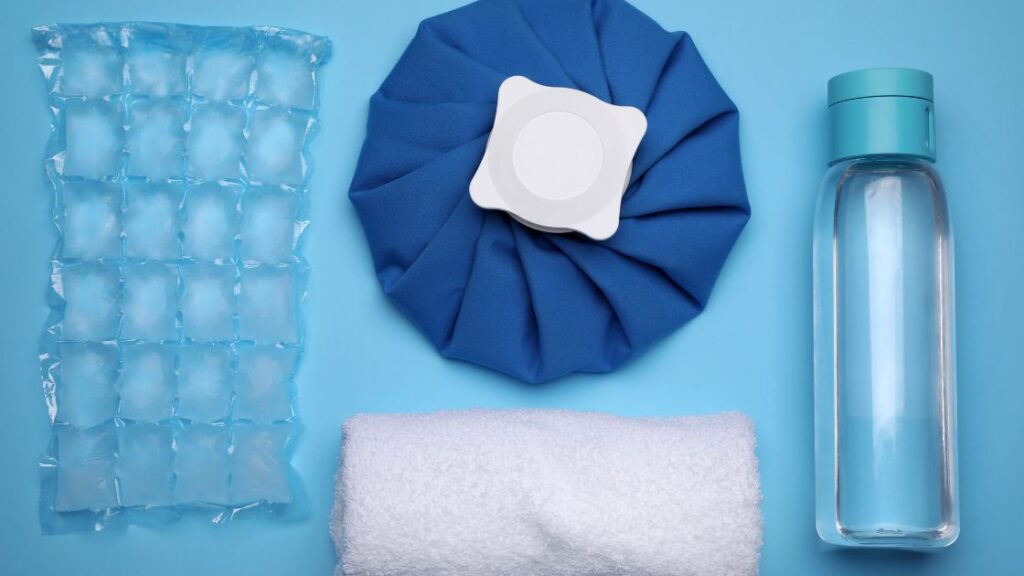
Using hot water bottles filled with boiling water or heat packs filled with rice is an excellent method to infuse additional thermal energy into your cooler.
The surplus thermal energy from the hot water bottle will help maintain a higher temperature throughout the entire cooler for an extended period, thus slowing down the cooling process of your food.
Common Questions About How to Keep Food Warm in a Cooler
In this section, we’ll address some frequently asked questions about how to keep food warm in a cooler.
What is the temperature at which food becomes unsafe to consume?
When using a cooler to keep things cold, we often don’t consider the importance of food safety and bacteria growth. However, when it comes to keeping things hot, it becomes crucial to be mindful of these factors.
According to the USDA, there exists a temperature range known as the “danger zone” for food, which falls between 40-140ºF (4.4-60ºC). Within this range, bacteria can multiply rapidly, leading to food spoilage and potential illness if consumed.
For certain meats, such as poultry, as well as leftovers, it is recommended to keep them above 165ºF (74ºC) to ensure safety. Once food enters the “danger zone,” it is advisable to consume it within 1-2 hours to prevent spoilage.
Improper storage or prolonged exposure to the danger zone can result in food spoilage even in a cooler. To avoid this, it is important to store your food hot and consume it within a couple of hours once the temperature starts to drop below 140-165ºF (60-74ºC).
What principles should you keep in mind when packing for how to keep food warm in a cooler?
- Preheating Your Food: The key to keeping your food hot is to start with hot food. Attempting to warm up food in a cooler is not recommended. Coolers lack a heating element and cannot effectively warm food. While they can minimize heat escape and help maintain the temperature, they are not designed for heating.
- Enhancing Thermal Mass: Have you ever noticed how soup retains its heat for a prolonged period, while toast quickly loses its warmth? The reason lies in the density and thermal mass of the substances involved. By increasing the overall thermal mass, such as incorporating hot water bottles or hot bricks into your cooler, you can extend the duration of heat retention. This simple technique ensures that your food stays warm for a longer time.
- Improve Insulation/Reduce Air Space: While a cooler can provide insulation, there are times when it could benefit from a little assistance. Surprisingly, everyday items like towels and cardboard can serve as excellent insulating materials, effectively keeping your hot food warm for extended periods. It’s important to note that empty air space within the cooler can hinder heat retention.
- Reducing Evaporation: When food is hot, it often releases steam. As water evaporates from your food, it takes away a significant amount of heat. To maintain its temperature for a longer duration, wrap your food or place it in a container that prevents steam from escaping.
Is it possible to use a soft cooler bag for keeping hot food?
Soft cooler bags offer the advantage of being lightweight compared to their hard plastic counterparts, making them ideal for travel or on-the-go use. However, it is important to note that using a soft cooler bag for hot food increases the risk of the plastic melting. To mitigate this, it is recommended to wrap the food in a towel. This not only helps to maintain the food’s temperature for a longer period but also acts as a protective barrier, safeguarding the cooler from potential heat-induced damage.
Video 6 Cooler Head to Head Throwdown | Best Cooler for Keeping BBQ Hot
Now that you are aware of how to keep food warm in a cooler, in this video you’ll find which among six coolers can actually handle this very ‘hot’ task.
Final Thoughts
In conclusion, keeping food warm in a cooler is not as daunting a task as you might initially believe. By adopting a few simple strategies such as starting with hot food, enhancing your cooler’s thermal mass, improving insulation, and reducing air space, as well as curtailing evaporation, you can effectively determine how to keep food warm in a cooler and maintain your food’s temperature for an extended period.
Whether you’re planning a picnic, a road trip, or just preparing for a long day out, these techniques will ensure that you can enjoy your meals just as hot and delicious as when they were first prepared. And remember, always keep an eye on the temperature to ensure food safety. Happy eating!

